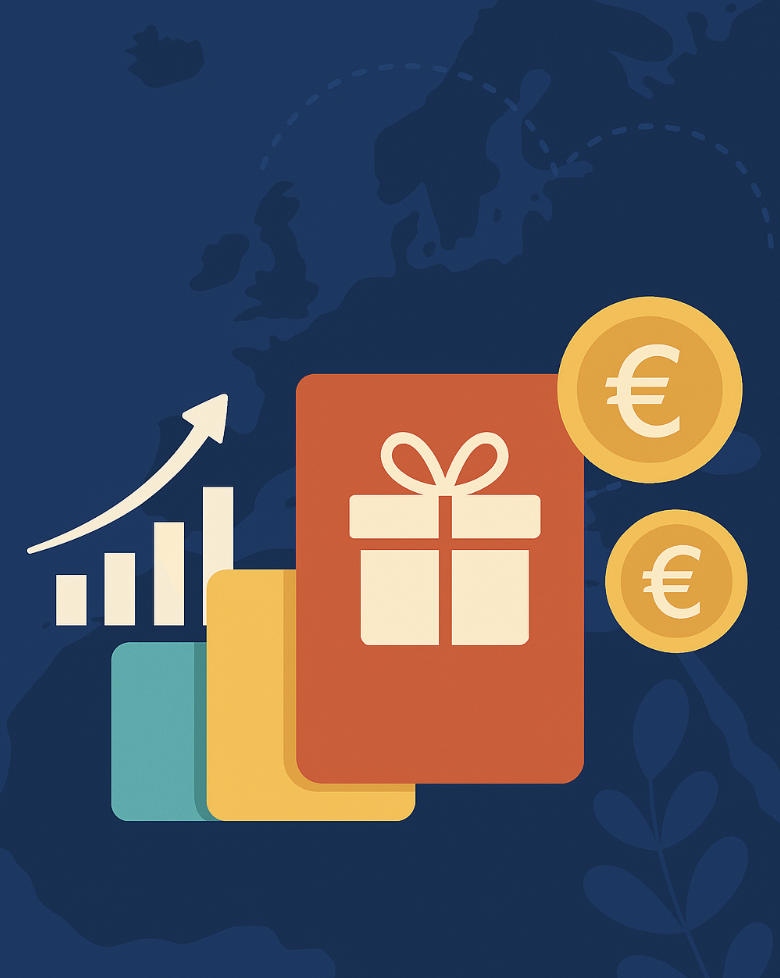
The European gift card market continues to experience robust growth, driven by evolving consumer preferences, digital transformation, and increased corporate adoption. Recent data shows that the market is projected to exceed €150 billion by 2027, reflecting a compound annual growth rate (CAGR) of over 10% since 2020.
The shift towards digital gift cards has been particularly notable. As consumers increasingly prioritize convenience, flexibility, and contactless payment options, digital formats now account for more than 60% of total gift card sales across key European markets such as Germany, France, the UK, and the Nordics.
Retailers, fintech companies, and digital platforms are capitalizing on this trend by expanding their gift card portfolios, offering innovative formats and cross-border usability. Corporate gifting and incentive programs have also emerged as significant growth drivers, with companies using gift cards to reward employees, promote customer loyalty, and facilitate flexible benefits.
However, the market also faces challenges, including regulatory differences across countries, fraud prevention, and the need for seamless integration with e-commerce and payment systems.
Industry experts predict that partnerships between telecom providers, supermarkets, and digital marketplaces will further accelerate adoption, especially in emerging markets within Eastern and Southern Europe.
As the gift card economy continues to evolve, stakeholders are looking beyond traditional retail use cases, exploring options in sectors like travel, dining, gaming, and even utility payments.


